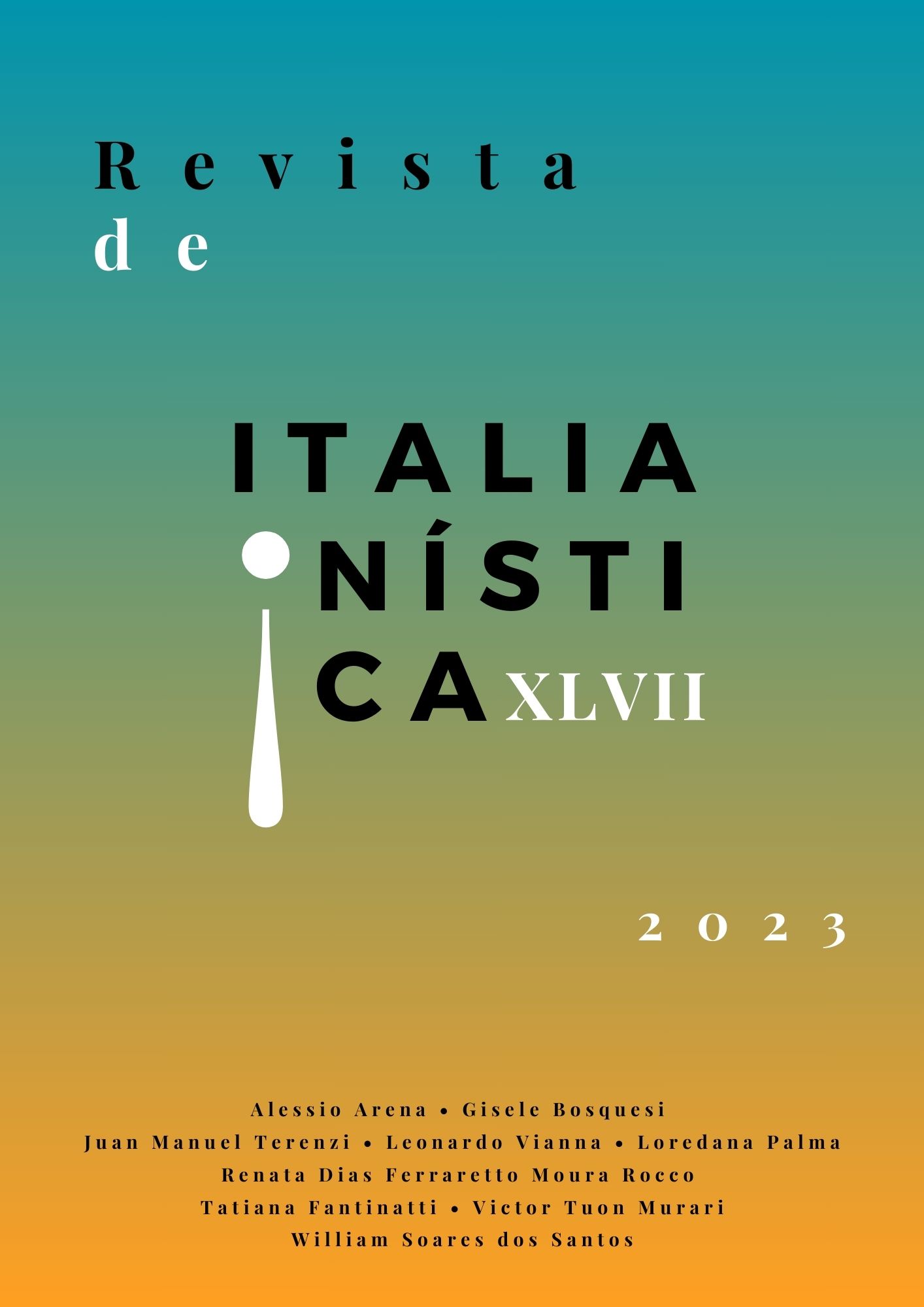Dante’s Allegories and Ovidian Myths in the Canto XXV of Divine Comedy’s Inferno
DOI:
https://doi.org/10.11606/issn.2238-8281.i47p4-18Keywords:
Dante Alighieri, Ovid, Latin Mythology, IntertextualityAbstract
The present work aims to present a study of the intertextual dialogue between the XXV canto of the Divine Comedy’s Inferno and the mythological characters found in the works by the Latin poet Ovid, author of The Metamorphoses. In this canto, in which the Italian author bears explicit signs of the intertextual continuation, the mythological characters of Cacus, Cadmus, and Arethusa are present, each one in their own fashion, as paradigms of a model that Dante, as announced by himself, intends to surpass. In so doing, by constructing the narrative of the thieves’ bolgia, in the fraudulent circle, the canto in question focuses on two penitents that undergo some horrid metamorphosis, and the Florentine author, while relies on several Ovidian procedures and themes, seeks to intensify its effects, thus contrasting the Latin author. Therefore, based on studies by Curtius (2013), Ledda (2015), and Carney (2012), we aim to illustrate how the intentional contrast between Ovid and the poetic experimentation of body horror, present both in Dante and in Ovid, may function by the means of allegory as a comment by Dante about the conception of poetry in the Middle Ages, as well as about his creative process.
Downloads
References
ALIGHIERI, Dante. A divina Comédia bilíngue. Introdução, tradução e notas de Vasco Graça Moura. São Paulo: Ed. Landmark, 2005.
CARNEY, G. Poetry, Theft, and Divine Creation in Inferno XXIV–XXV. Comitatus: A Journal of Medieval and Renaissance Studies. Baltimore: v. 43, n. 1, p. 55-77, 2012.
CATTERMOLE, C. CICCUTO, M. Miti, figure, metamorfosi: L’Ovidio di Dante. Firenze: Le Lettere, 2019.
CURTIUS, E. R. Literatura européia e Idade Média latina. São Paulo: EDUSP, 2013.
D’ONOFRIO, S. Pequena Enciclopédia da Cultura Ocidental: o saber indispensável, os mitos eternos. Rio de Janeiro: Elsevier, 2005.
HANSEN, J. A. Alegoria: construção e interpretação da metáfora. Campinas: Ed. da Unicamp, 2006.
HARVEY, P. Dicionário Oxford de Literatura Clássica grega e latina. Rio de Janeiro:Jorge Zahar, 1987.
LEDDA, G. Dante: Le metamorfosi della visione. Radio Emilia Romagna, 2015. Un testo di Giuseppe Ledda tratto dalla rivista “IBC. Informazioni commenti inchieste sui beni culturali” (1, 2008). Disponível em: <https://www.radioemiliaromagna.it/podcast/dante-le-metamorfosi-della-visione/>. Acesso em: 10 de março de 2022.
NESTAREZ, O. RODROGUES, E. “Body Horror”: quando o corpo humano vira matéria prima do medo. Galileu, 2021. Disponível em: <https://revistagalileu.globo.com/Cultura/noticia/2021/07/body-horror-quando-o-corpo-humano-vira-materia-prima-do-medo.html>. Acesso em: 22 de fevereiro de 2022.
OVÍDIO. Metamorfoses. Trad. David Gomes Jardim Junior. São Paulo: Tecnoprint, 1983.
OVID. Fasti. Trad. Sir James George Frazer. Cambridge: Harvard University Press, 1989.
PASTOUREAU, M. Bestiari del Medioevo. Torino: Einaudi, 2012.
SIVIGLIA, Isidoro di. Etimologie o Origini. A cura di Angelo Valastro Canale. Torino: UTET, 2013.
Downloads
Published
Issue
Section
License
Copyright (c) 2023 Revista de Italianística

This work is licensed under a Creative Commons Attribution-NonCommercial-NoDerivatives 4.0 International License.
A revista retém os direitos patrimoniais dos artigos e os publica simultâneamente sob uma Licença Creative Commons-Atribuição-Não Comercial-Sem Derivações.



